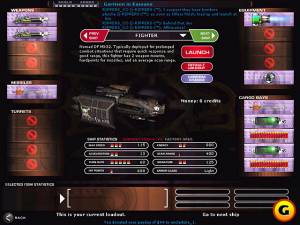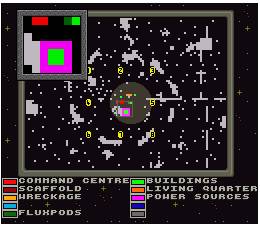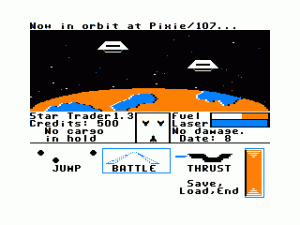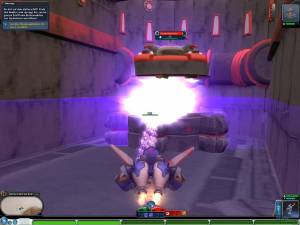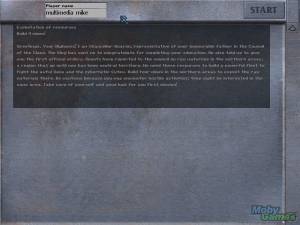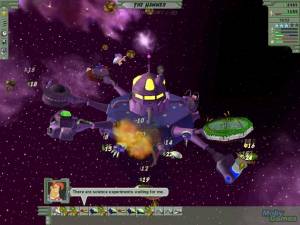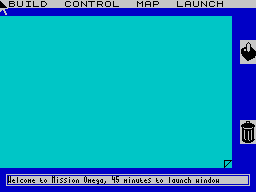Game Classification
Light of Altair SaintXi, SaintXi, 2009
Classification
VIDEO GAMEKeywords
Market
This title is used by the following domains:- Entertainment
Audience
This title targets the following audience:Age : 12 to 16 years old / 17 to 25 years old
General Public
Gameplay
The gameplay of this title is Game-based(designed with stated goals)
The core of gameplay is defined by the rules below:
Similar games
 Light of Altair is a real-time strategy game about the colonization of space, starting in 2062AD. It follows the story of Adrian Alandan who is tasked to investigate and colonize planets in the proximity of Earth, following a great war for resources that changed Earth permanently. By 2020AD, Asia surpassed the USA as an economic giant, while Africa developed quickly following a wave of revolutions. Consequently the demand for oil skyrocketed and all eyes were set on the remaining large fields in the Middle East. Africa felt the tendency of protectionism and took the initiative, marching into Europe and walking over its aged army, that was barely able to eventually regroup and force peace. Meanwhile the USA and China competed for world dominance, but the latter got the upper hand through its space programs where weapons were launched. That way, the USA was forced to join a world order that surpassed the concept of countries. The UEO, United Earth Order, was formed, working together to clean the scorched Earth of radioactive dust. Due to the dwelling resources, in 2062AD the first permanent colony on the Moon was established, and from there the game takes off.
Light of Altair is a real-time strategy game about the colonization of space, starting in 2062AD. It follows the story of Adrian Alandan who is tasked to investigate and colonize planets in the proximity of Earth, following a great war for resources that changed Earth permanently. By 2020AD, Asia surpassed the USA as an economic giant, while Africa developed quickly following a wave of revolutions. Consequently the demand for oil skyrocketed and all eyes were set on the remaining large fields in the Middle East. Africa felt the tendency of protectionism and took the initiative, marching into Europe and walking over its aged army, that was barely able to eventually regroup and force peace. Meanwhile the USA and China competed for world dominance, but the latter got the upper hand through its space programs where weapons were launched. That way, the USA was forced to join a world order that surpassed the concept of countries. The UEO, United Earth Order, was formed, working together to clean the scorched Earth of radioactive dust. Due to the dwelling resources, in 2062AD the first permanent colony on the Moon was established, and from there the game takes off.
Seemingly a typical 4X game at first, Light of Altair is more accessible to play through having the computer handle a number of tasks that need to be done manually in games like Sword of the Stars or Galactic Civilizations. The UEO will soon be threatened through political developments on Earth by new factions, such as The States of New Europe and a conservative New America, along with purely economic groups. In a large number of missions, different planets need to be colonized. Each planet, shown as a 3D globe, is divided into different sectors where Colony HQs can be established. From there, Hydrophonics need to be built to provide food, while Solar Arrays provide power. From this basic setup, the population growth, overall happiness, available food and resources can be checked. Players can then expand through Research Centers, Mines (to dig up ore), Industrial Centres (to process the ore into goods that can be traded) and Starports where the trade routes are developed. Players only have control of construction and the strategical decisions. Later in the game, multiple sectors can be colonized and it is possible to zoom out to visit other planets in the asteroid belt and even different galaxies. Next to trade of processed resources, money can also be earned through taxes on the colonies.
When things go awry, a military component is added, through of minor importance compared to the economic management. The player can build fuel provisions and shipyards, where different ships can be designed, outfitted with different types of weapons and defence mechanisms, and be added to fleets. These fleets can defend a planet, attack another one or engage a different fleet. This results into large-scale battles in space, where the player only gives general instructions and watches the conflict unfold. Often, two factions will be colonizing the same planet. For each of the buildings, there are upgraded versions (e.g. a Nuclear Reactor instead of a Solar Array), but these require research and certain tiers based on the player's achievements. Every type of construction drains the earned money and they also requires upkeep. The story is furthered through gameplay intermissions by different factions. The UEO leaders also require specific milestones to progress and take back their funds when they are not met. [source:mobygames]
Distribution : Retail - Commercial
Platform(s) : PC (Windows)
 Français
Français English
English






